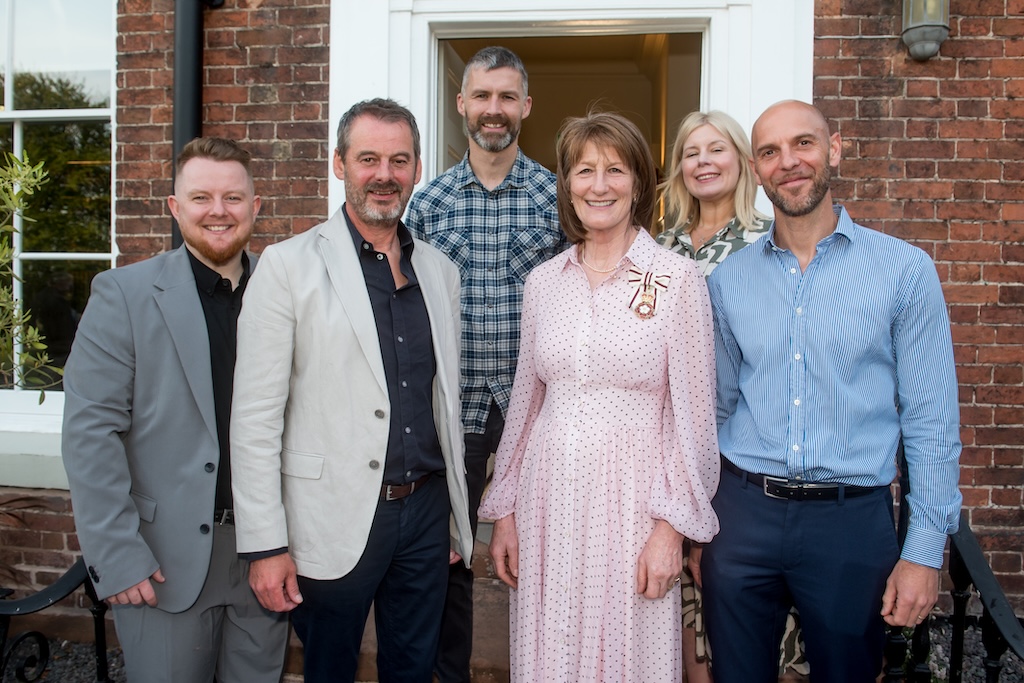Huge fields of canary-yellow Oilseed Rape stretch to the horizon. In other fields, wintersown Wheat shimmers in the early summer breeze. From an agricultural point of view, this is efficient land management. Chemicals keep weeds at bay and encourage healthy crops. Large machinery can quickly harvest the profitable crops from the vast fields.
Grasslands have not escaped the process of modernisation. Large fields of bright green Rye Grass are grown as a silage crop. Fertiliser is added to the soil to encourage the grass, at the expense of any other vegetation. Often Clover is sown alongside it to fix nitrogen and improve the soil. Because the grass grows so quickly, several cuts can be attained in a year.
“This is a traditional hay meadow and today is a very rare habitat.”
These ‘improved’ grasslands are widespread across Shropshire. Occasionally you might come across a field that looks a bit different. The colour may not be such a bright green, and there may be a patchwork of different shaped leaves amongst the grass. This is a wild grassland, untouched by chemicals and allowed to bloom. This is a traditional hay meadow and today is a very rare habitat.
In fact, grasslands are never truly ‘wild’. They are a managed habitat. If they were left to their own devices they would scrub over and eventually turn into woodland. Their management makes hay meadows vital sanctuaries for wildflowers and, in turn, invertebrates.
Hay meadows must be managed as a low-nutrient habitat. Fertiliser favours grasses to grow at the expense of more delicate wildflowers. Where soil nutrients are limited, the wildflowers have the edge. To do this, one must use a combination of grazing and cutting. The hay must be cut once a year after the flowers have seeded. This is normally done in late July. Livestock are then put on the field to graze off the aftermath growth. This combination removes the plant matter from the field completely, and does not allow it to rot down and fertilise the soil.
We have used this management regime on a wonderful hay meadow at Severn Valley Country Park and it has yielded some impressive sights. The great thing about hay meadows is the length of flowering season. There is a huge variety of potential nectar sources for invertebrates, all flowering at different times.
In April the Cowslips nod in the breeze. The flowers look like drops of sunlight. Flowers often eradicated as ‘weeds’ also find a haven in the hay meadow. Dandelion clocks and Ribwort Plantain stand tall like sentinels, whilst the jagged sharks’ teeth of Thistle leaves nestle amongst the sward.
May is a special month in the meadow. The field turns yellow as the creeping Buttercup comes into flower. With some care one can find the beautiful purple flowering spike of the Green-Winged Orchid. As hay meadows have disappeared from Shropshire, so has this plant.
As you are reading this article in June, the meadow will be in full bloom. Common Spotted Orchids will be in flower in their hundreds, a truly amazing sight. Rarities like Adders Tongue Fern will be hiding amongst the grass. Even the grass itself will be in flower. Names such as Crested Dogs Tail and Sweet Vernal Grass show the huge variety of different species present.
The best traditional hay meadows have developed over many years of appropriate management. One application of fertiliser can destroy the botanical interest. With the loss of traditional hay meadows we have not only lost an important wildlife habitat, but also a vital cultural asset. We often take groups of children walking through the meadow at Severn Valley Country Park. They chase butterflies amongst the orchids and crawl through the long grass, with the scent of the summer all around them.
There are ways that ‘improved’ grasslands can be made more interesting. Introducing Yellow Rattle Seed into the sward reduces the vigour with which the grass grows. This plant is a hemi-parasite so steals nutrients from the grass, allowing wildflowers some space. It gets the name from the dry seed heads that rattle in the wind in late summer.
To speed up the process of colonisation, one can also strew species-rich hay onto a field. The seeds from the hay will fall onto the bare earth which has been poached by the feet of the grazing animals. Over the years, with correct management, the colour will return to the field, reversing the process of sterilisation so evident elsewhere across our countryside.
Do one thing for wildlife this month: Orchid seed can lye dormant in the soil for many years, waiting for the right conditions in which to flower. In order to know how successfully a hay meadow is being managed, it is essential to monitor the number of flowering orchids each year.
Why not take part in a ‘Picnic in the Orchids’ event being organised by my colleagues at Shropshire Council Outdoor Recreation Service. It will be held on Tuesday 21st June at the Mere, Ellesmere (10am– 3.30pm). As well as taking part in the annual orchid count, you will also be able to learn how to identify other meadow plants. For more details, please telephone 01691 624280.





